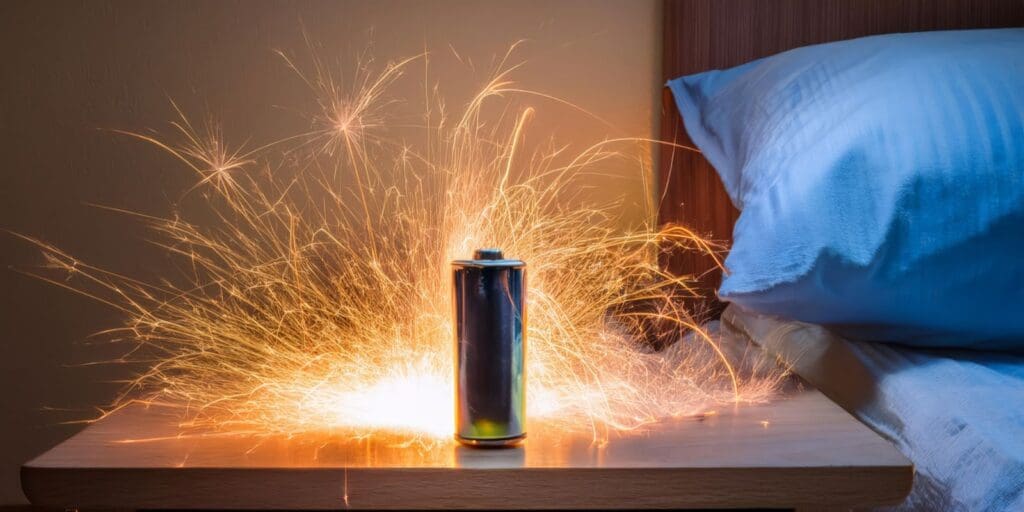In response to a growing number of incidents involving lithium-ion battery fires, South Wales Fire and Rescue Service (SWFRS) is issuing a warning about the potential dangers, urging proper usage and storage of devices and vehicles to help prevent fires and injuries.
Electric bicycles, scooters, vapes, mobile phones and other devices utilising this type of battery are more popular than ever.
However, these batteries can pose serious fire risks if damaged, improperly charged, or exposed to heat. Fortunately, these fires are largely preventable with simple safety steps.
When lithium-ion batteries are damaged, they can overheat, catch fire, and even lead to explosions. When fires of this nature occur, they burn very hot and can be difficult to extinguish.
It’s not just about charging, it’s where you buy the items from, where you store them, and what you do if there’s any damage or you need to dispose of them.
Many fires involve counterfeit electrical goods. Items which don’t meet British or European standards pose a huge fire risk and while genuine chargers (or battery packs) may cost more, it’s not worth putting your life at risk and potentially destroying your home by buying a fake charger to save a few pounds.
In South Wales during the last 5 years (FY 20/21 to 24/25) there have been:
- 136 fires involving lithium-ion batteries (EVs, EV equipment charging, battery charging, mobile phones, e-vape/e-cigarettes), 100 of which occurred in the last 2 years
- These led to 30 injuries, 24 of which occurred in the last 2 years
- 49 were accidental dwelling fires, 34 of which occurred in the last 2 years
- These accidental dwelling fires led to 11 injuries, 8 of which occurred in the last 2 years – 1 of these accidental dwelling fires led to a fatality linked to a fire involving a fault in a battery charger
- 39 of the 136 fires involved e-scooters or e-bikes, 25 of which occurred in the last 2 years
- These have led to 13 injuries, 10 of which occurred in the last 2 years
- 16 were accidental dwelling fires, 10 of which occurred in the last 2 years
- These accidental dwelling fires have led to 5 injuries, 3 of which occurred in the last 2 years – none of these were fatal.
SWFRS Home Safety Manager, Marc Davies, says:
“Lithium-ion batteries are an emerging and growing fire risk which can lead to injury or even fatality. Always purchase from reputable retailers using manufacturer approved chargers and avoid charging or storing along your escape routes. Smoke alarms save lives through early detection, buying you time to escape. If there is a fire, get out, stay out and call 999.”
- Buy e-bikes, e-scooters and chargers and batteries from reputable retailers
- Ensure you have working smoke alarms. If you charge or store your e-bike / e-scooter in a garage or kitchen ensure you install detection, we recommend heat alarms rather smoke detectors for these areas.
- Charge batteries whilst you are awake and alert so if a fire should occur you can respond quickly. Don’t leave batteries to charge while you are asleep or away from the home.
- Don’t charge anything in a corridor or room that provides the only means of escape.
- Register your product with the manufacturer to validate any warranties – batteries are usually included in warranties. Registering makes it easier for manufacturers to contact you in the event of safety or recall information.
- Check any products you have bought are not subject to a product recall. You can do this by checking Electrical Safety First’s website.
- Do not overload socket outlets or use inappropriate extension leads (use un-coiled extensions and ensure the lead is suitably rated for what you are plugging into it).

